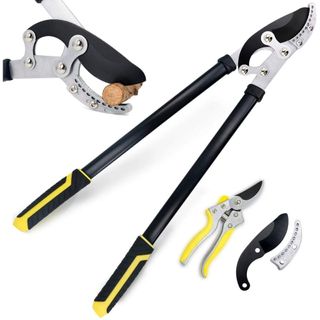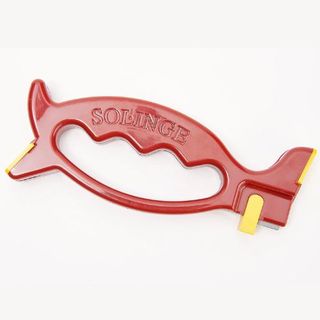7 plants to prune in April – shrubs and herbaceous perennials to snip this month
Discover a range of plants to prune in April and how they can be successfully trimmed, including some popular backyard shrubs and perennial border favorites


April is an exciting time in the gardening calendar. As the spring weather arrives the conditions become much more ideal for spending time out in the garden getting important pruning jobs done.
While winter pruning can mean lots of layers and cold fingers, pruning in spring can be a much more enjoyable experience. There may be many plants to prune in spring in your backyard this month too, as it can be an ideal time to trim lots of common shrubs and perennials in your borders.
As well as pruning in April to neaten your shrubs, you can also be busy adding to your garden as there can be lots to plant in April too. While there may be lots of jobs that warrant your attention this month, make sure to keep pruning near the top of your to-do list.
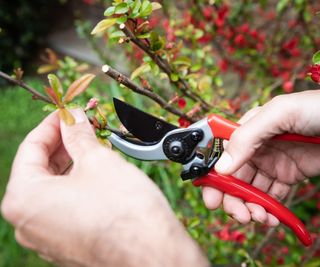
What Can You Prune In April?
There is a long list of potential plants that can be pruned in April, depending on your location. For example, it may still be the time to prune deciduous shrubs and prune the likes of clematis, hardy fuchsias or butterfly bushes if you live in colder climates. It is also the ideal month to prune early-flowering shrubs that may have taken center stage with their blooms during winter and early spring.
On top of those mentioned above, we take a closer look at seven popular plants that may feature in your backyard and benefit from a bit of attention this month.
1. Boxwood
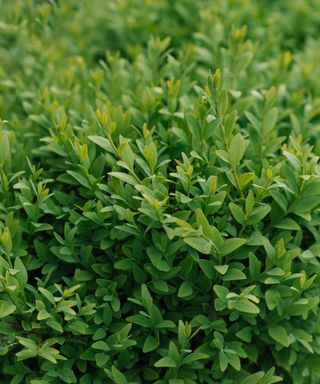
Boxwood bushes are regularly seen as hedges or topiary plants in backyards. They are not fast-growing plants but do benefit from regular pruning to keep them nicely shaped and encourage healthy growth.
Any boxwood trimming wants to take place after the risk of frosts has ended for your location. Pruning in spring allows you to remove old yellowing boxwood leaves - which are often the result of winter - and to gently shape the bush. This result will be a neat plant and the pruning will stimulate healthy new growth of stems and leaves.
2. Chaenomeles
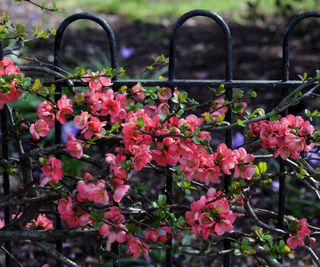
Chaenomeles, also known as flowering quinces, are deciduous winter flowering shrubs that produce dazzling flowers during the colder months of the year in winter and early spring. The plants want to be pruned after they have finished flowering, from late April into May depending on your location. This annual trimming keeps the plant healthy and also guarantees great displays the following year.
It is important to wear thick gardening gloves and long sleeves to prune a Chaenomeles, as it is a shrub that has spiny stems that can cause you damage.
Prune out any dead, diseased, and damaged stems, along with any that are weak or crossing – as they can rub and create entry points for disease. To rejuvenate an older shrub, you can remove some of the older branches each spring, but observe the one-third pruning rule and do not get too carried away.
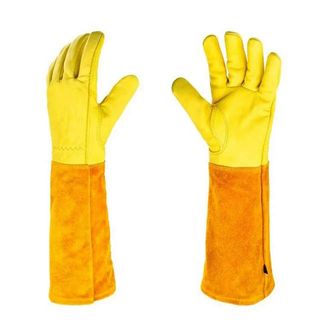
A pair of thorn-proof gardening gloves made of comfortable cowhide leather, with forearm protection against thorns and spikes
3. Hydrangea
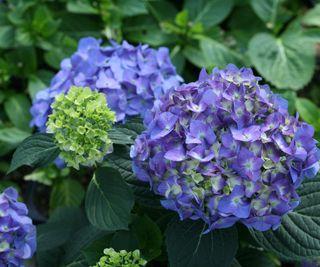
Hydrangeas are low-maintenance flowering shrubs that benefit from annual pruning to shape them and encourage a fantastic flush of flowers. Late winter or early spring is the time to prune many types of hydrangeas, so April is ideal for many gardeners.
Popular hydrangea varieties like mophead and lacecap hydrangeas are pruned at this time, however, do not make the hydrangea pruning mistake of trimming climbing types that should be pruned after flowering. Do your research before trimming to make sure it is the right time to prune your hydrangea.
Any old flower heads remaining on the shrub are removed to above a pair of buds and any dead, damaged, diseased, thin or weak stems must be trimmed out too. You can also remove selected larger branches if your hydrangea has started outgrowing its space.
4. Penstemon
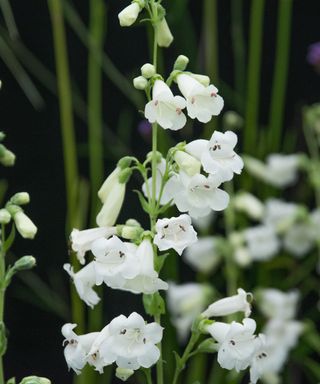
Penstemons are fantastic late-summer flowers as their spikes of bright-colored flowers are great plants for pollinators. They are renowned as plants that attract bees, while the tubular flowers attract hummingbirds too.
Penstemons are hardy in US hardiness zones 4-9 and want pruning once the risk of frost has passed. It is best to leave the old foliage in place over winter as it can protect emerging buds from the cold. Once you see new growth appear at the base in early spring, prune the penstemon back to just above those new shoots – taking care not to damage the emerging growth.
5. Photinia
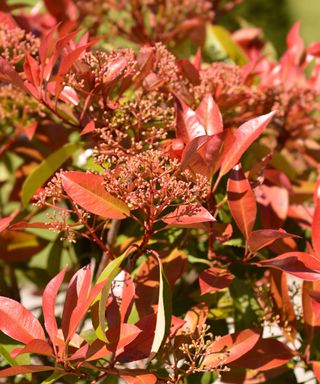
Photinia are popular evergreen shrubs that are commonly used as hedging plants but can be striking additions to your backyard ideas as specimen shrubs. There are many varieties of photinia to choose from – though many tend to be great plants for fall color – and they do not always need extensive pruning. The trimming tends to be minimal and primarily for shape and size.
Pruning in early spring can help to maintain the shape, especially as many photinia are fast-growing shrubs that can quickly get too large for an area. April can be an ideal time to reduce the height and renovate a photinia hedge, or trim a shrub to keep it compact and prevent it from dominating a space.
6. Ribes
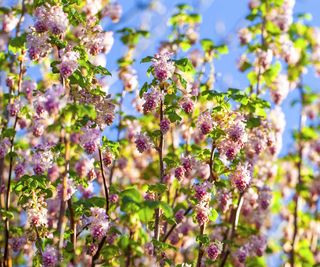
Ribes are known as flowering currants and they are another early-flowering shrub that wants to be pruned after they have finished flowering. Depending on your location, it may be done flowering during April and will benefit from a bit of a trim to keep it in check.
The plant flowers on growth produced the previous season, so pruning after flowering promotes the growth of lots of new stems to carry next year’s flowers. All of this year’s flowered stems should be cut back to a healthy pair of buds to create a strong and open framework. To rejuvenate older ribes, up to a third of the oldest stems can be completely removed down to ground level.
7. Verbena
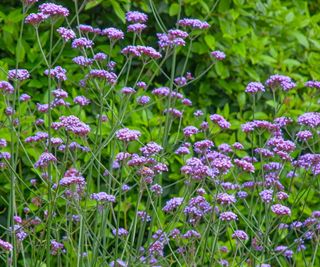
Perennial verbena benefits from being pruned in the early spring. If you do grow verbena, you may be tempted to prune in the fall, however, it should be a job for the spring gardening checklist as the old seed heads can provide food and shelter as part of a winter garden.
Cutting down the old stems in spring can help to shape the plant and also promote a new flush of growth from the base of the plant. The reward will be a neat appearance, a bushier plant, and a great display of flowers come summer. Once the frosts have ended, and you see new green shoots at the base, trim the old and woody stems down to just a few inches from the ground.
Tools for April pruning
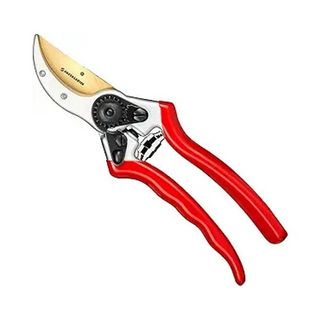
A pair of bypass pruning shears engineered from Japanese grade high-carbon steel to trim branches up to 1” thick
FAQs
Is it too late to prune roses in April?
The ideal time to prune roses is from late winter to early spring and you do need to wait until your last frost date has passed. If you have not got around to pruning your roses yet, then the window is closing and it is best to get them done early in April. Waiting too long will be a rose pruning mistake that will delay the summer flowering. Hold off too long into April and new growth and blooms will already be starting to to appear.
It may indeed be a busy month for any gardener. Pruning is definitely on your to-do list for April, so should be sowing seeds. There are lots of flowers to sow in April, and also vegetables to plant in April, and growing plants from seed is an enjoyable and inexpensive way to grow lots of plants for this year’s garden.
Sign up to the Homes & Gardens newsletter
Design expertise in your inbox – from inspiring decorating ideas and beautiful celebrity homes to practical gardening advice and shopping round-ups.

Drew’s passion for gardening started with growing vegetables and salad in raised beds in a small urban terrace garden. He has worked as a professional gardener in historic gardens and specialises in growing vegetables, fruit, herbs, and cut flowers as a kitchen gardener. That passion for growing extends to being an allotmenteer, garden blogger, and producing how-to gardening guides for websites. Drew was shortlisted for the New Talent of the Year award at the 2023 Garden Media Guild Awards.
-
 Where do interior designers find creative inspiration? We asked 9 designers to share, and their answers reflect how today's trends are formed
Where do interior designers find creative inspiration? We asked 9 designers to share, and their answers reflect how today's trends are formedAsking the interior designers who set the trends where they get their inspiration helps understand why decor today looks how it does
By Pip Rich Published
-
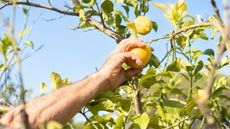 7 fruits to plant in April for years of tasty homegrown harvests, plus expert planting tips
7 fruits to plant in April for years of tasty homegrown harvests, plus expert planting tipsAn exceptional selection of fruit trees and soft fruit can be planted this month
By Drew Swainston Published
